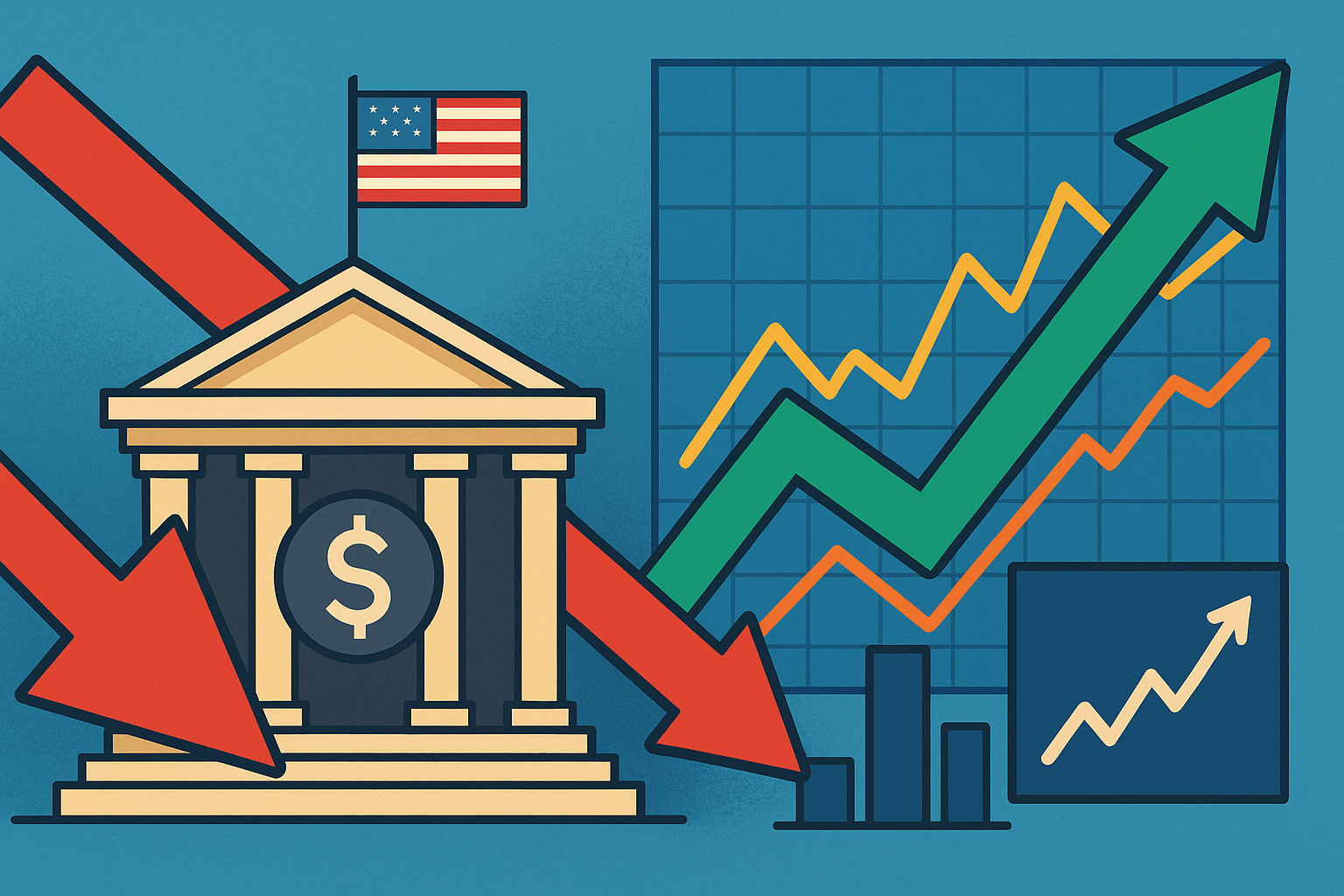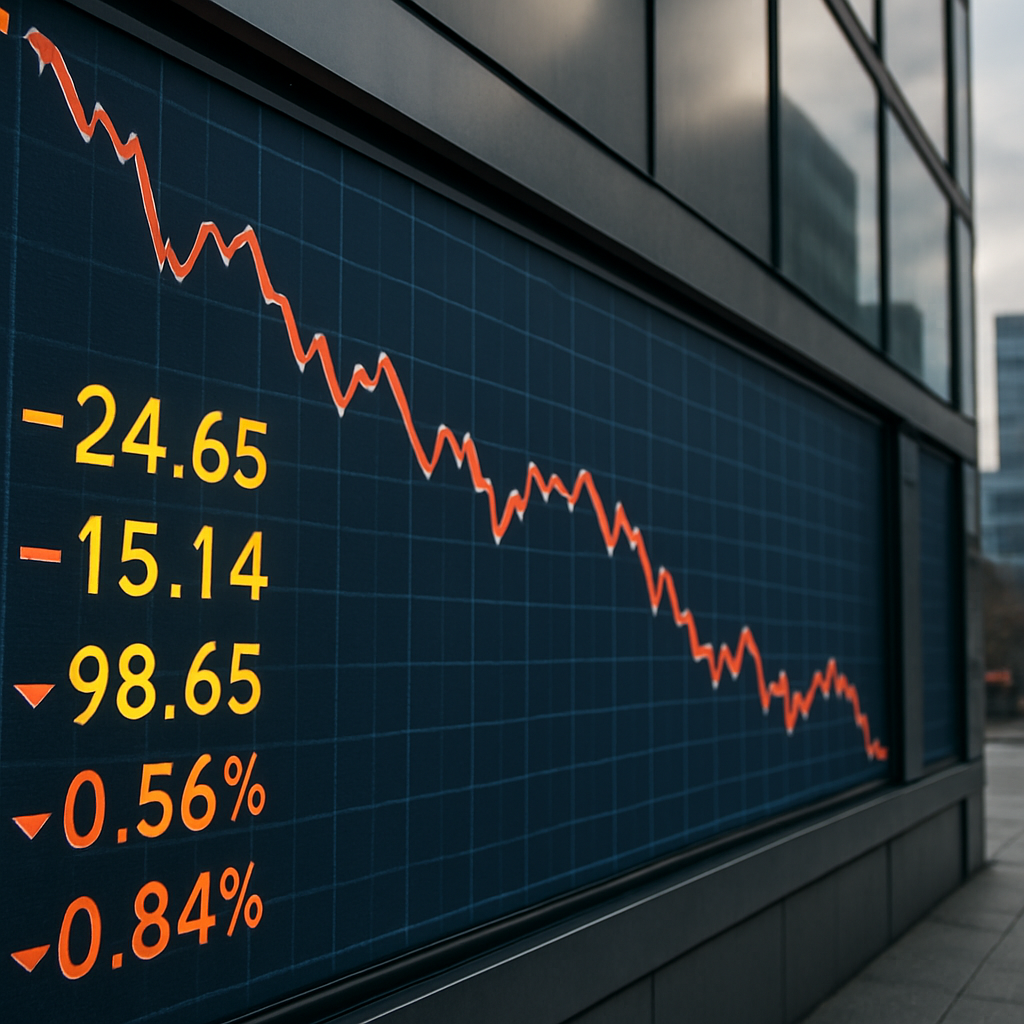The U.S. Federal Reserve has delivered its first interest rate cut of 2025, lowering the benchmark rate by 25 basis points. The move, widely anticipated by investors, immediately fueled a rally in futures, with the S&P 500 and Nasdaq both hitting record highs as traders priced in the likelihood of further cuts in October and December.
Why This Matters Now
After holding rates steady through the first half of the year, the Fed’s decision signals a pivot in monetary policy aimed at balancing inflationary pressures with slowing economic momentum. According to Reuters, markets now expect a total of 75 basis points in cuts by year-end, reflecting the central bank’s readiness to support growth while ensuring inflation remains on track toward its 2% target.
For investors, the immediate market response highlights how sensitive equities remain to monetary policy. The rally underscores a renewed appetite for risk assets, particularly in technology and growth stocks, which benefit most from lower rates.
A Market Fueled by Liquidity
Liquidity remains the central narrative. With borrowing costs easing, corporations gain more flexibility for capital spending, share buybacks, and M&A activity. Meanwhile, investors searching for yield are expected to rotate more aggressively into equities and higher-risk assets.
Analysts at Goldman Sachs noted earlier this week that a sustained easing cycle could unlock double-digit gains for the S&P 500 over the next 12 months, particularly if corporate earnings continue to surprise on the upside. At the same time, Treasury yields have dipped, signaling strong demand for fixed income as investors recalibrate portfolios.
Risks Lurking Beneath the Surface
Despite the bullish reaction, risks remain. Inflationary pressures—particularly from energy markets and wage growth—could complicate the Fed’s ability to follow through with consecutive cuts. A resurgence in inflation could force policymakers to slow or even pause easing.
Additionally, geopolitical factors such as the ongoing trade disputes and global supply chain adjustments could introduce volatility into both equity and bond markets. Investors must remain cautious that today’s optimism does not mask structural risks.
Future Trends to Watch
- Tech & Growth Rally: Expect technology, biotech, and other growth sectors to lead equity performance as rate-sensitive assets gain traction.
- Fixed Income Rotation: Short-term bonds may lose appeal, while investors shift toward longer-duration assets to lock in yields before further cuts.
- Global Spillover: Emerging markets could benefit from capital inflows as U.S. easing reduces the dollar’s strength, supporting global liquidity.
- Corporate Activity: Lower borrowing costs may drive an uptick in mergers, acquisitions, and leveraged financing deals in late 2025.
Key Investment Insight
For investors, the Fed’s rate cut marks more than just a policy adjustment—it represents the start of a potential easing cycle with broad implications for equities, bonds, and alternative assets. Positioning portfolios toward growth sectors while maintaining hedges against inflation risk will be crucial.
Opportunities lie in technology, real estate investment trusts (REITs), and high-yield credit, while caution is warranted in commodities that could reignite inflationary pressures.
Key Takeaways
The Fed’s decision to lower rates by 25 basis points has reaffirmed markets’ faith in liquidity-driven growth. As futures soar to record highs, investors are betting on further cuts and an extended bull cycle into 2026.
Yet beneath the surface, inflation risks and geopolitical uncertainty demand careful allocation. For now, the playbook is clear: stay aligned with sectors positioned to thrive under lower borrowing costs while preparing for volatility.
Stay connected with MoneyNews.Today for daily insights on how central bank decisions and market shifts shape tomorrow’s investment landscape.





